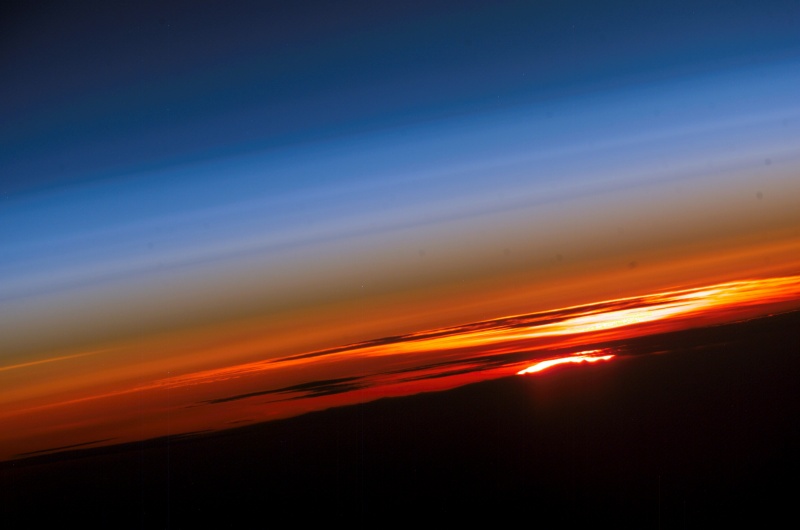Credit & Copyright: Expedition 15 Crew,
NASA
Explanation:
Today, the
Sun crosses the celestial equator heading north at 0548
UT.
Known as the equinox, the geocentric astronomical event marks the
first day of spring in the northern hemisphere and autumn in the
south.
Equinox means
equal
night and with the Sun on the celestial equator,
Earth dwellers
will experience nearly 12 hours of daylight and 12 hours of darkness.
Of course, for those
in the north, the days will grow longer with the
Sun marching higher
in the sky as summer approaches.
To celebrate the equinox, consider
this colorful view of the setting Sun.
Recorded last June from the International
Space Station, the
Sun's limb still peeks above the distant horizon as seen from Earth
orbit.
Clouds appear in silhouette as
the sunlight is reddened by dust in the dense lower atmosphere.
Molecules in the more tenuous upper atmosphere are preferentially
scattering blue light.
1999 2000 2001 2002 2003 2004 2005 2006 2007 2008 2009 2010 2011 2012 2013 2014 2015 2016 2017 2018 2019 2020 2021 2022 2023 2024 2025 |
Январь Февраль Март Апрель Май Июнь Июль Август Сентябрь Октябрь Ноябрь Декабрь |
NASA Web Site Statements, Warnings, and Disclaimers
NASA Official: Jay Norris. Specific rights apply.
A service of: LHEA at NASA / GSFC
& Michigan Tech. U.
|
Публикации с ключевыми словами:
equinox - sunset - Равноденствие - закат
Публикации со словами: equinox - sunset - Равноденствие - закат | |
См. также:
Все публикации на ту же тему >> | |
